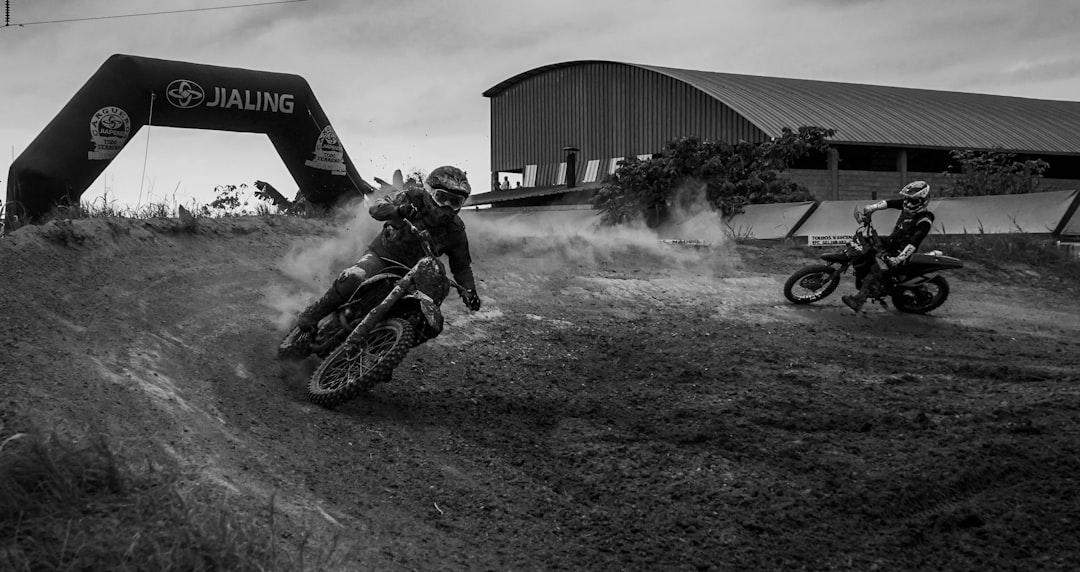When it comes to two-wheeled adventures, one crucial yet often overlooked component is the motorcycle chain. Whether riding off-road trails, conquering enduro courses, or cruising city streets, a bike’s chain is vital to its performance and reliability. However, not all motorcycle chains are created equal. The kind of chain a rider chooses dramatically influences durability, efficiency, and safety depending on the type of riding. But do motorcycle chains really differ for motocross, enduro, and street applications?
TLDR:
Yes, motorcycle chains significantly differ across motocross, enduro, and street motorcycles. Each discipline demands specialized chain construction, materials, and maintenance considerations to handle unique stresses and environmental conditions. Motocross chains are lightweight and made for short bursts of intense activity, enduro chains focus on durability and sealing against dirt, while street chains prioritize longevity and low-maintenance performance. Choosing the correct type enhances performance and safety.
The Function and Importance of Motorcycle Chains
The motorcycle chain serves as the primary link between the engine and the rear wheel. It transfers power effectively, allowing the rider to accelerate, maintain speed, and reduce engine load. However, different styles of riding expose chains to vastly different stressors, including terrain, debris, torque, and weather.
Because of these variables, manufacturers design chains with specific use-cases in mind. To understand how and why chains differ, it’s essential to examine each riding discipline individually.
Motocross Chains: Built for Bursts
Motocross chains are specifically designed for the high-intensity, short-duration style of motocross riding. These races usually take place on closed tracks with jumps, tight corners, and unpredictable surfaces. Here are the major characteristics of motocross chains:
- Lightweight Construction: Every ounce counts in motocross, so chains often shed extra weight using minimal links and inner plates.
- Strong Tensile Strength: The rapid acceleration and constant impacts require a chain that can handle sudden jolts of power.
- Non-Sealed (Non-O-ring): Many motocross riders prefer non-sealed chains for reduced rolling resistance, even if they require more frequent cleaning and lubrication.
Because power delivery is intense and tracks are often cleaned between races, sealed links are seen as unnecessary weight, especially for short-term use.

Enduro Chains: Built for Endurance
Enduro riding is demanding and prolonged, often taking place on wild terrains with rivers, mud, sand, rocks, and steep ascents. The nature of this off-road sport means the chain must be more than just strong—it has to be resilient and resistant to environmental hazards.
- Sealed Chains (O-ring or X-ring): Seals prevent grime, mud, and water from entering the internal parts of the chain, ensuring a longer lifespan even in harsh environments.
- Heavy-Duty Materials: These chains are more robust to withstand constant abrasion from dirt and small rocks.
- Moderate Weight: While not as light as motocross chains, enduro chains strike a balance between low weight and long-lasting strength.
Sealed chains, often with advanced X-ring designs, also help reduce the need for regular maintenance stops mid-race, which is a significant benefit during long-distance competitive events.
Street Motorcycle Chains: Made for Longevity and Efficiency
Street riding introduces different challenges, particularly related to longevity, consistent performance, and low maintenance. Unlike off-road environments, paved roads don’t bombard the chain with mud and rocks, but extended usage and varying weather conditions demand a durable setup.
- Sealed Chains (primarily O-ring or X-ring): These rings help protect the inner links from road grime and extend the chain’s life.
- High-Performance Lubrication: Designed for quieter, smoother rides and less frequent maintenance intervals.
- Heavier and Longer-Lasting: Built for thousands of miles, many road bike chains are heavy-duty and designed to run clean and quiet.

In high-powered street bikes, chains also have to handle steady torque transfers over extended periods—hence the need for top-grade construction and lubrication retention.
How to Choose the Right Chain
Choosing the correct type of chain involves understanding not just the riding discipline but also the rider’s habits and environmental exposure. Here are key considerations:
- Type of Bike: Always reference the motorcycle manufacturer’s recommended chain type and size.
- Riding Conditions: Wet, muddy, or off-road conditions call for sealed chains with greater durability.
- Maintenance Commitment: Non-sealed chains can offer better performance but require frequent care, while sealed chains are more forgiving.
- Power Output: Larger, more powerful bikes need stronger chains with higher tensile strength ratings.
Mismatching a chain to the riding style can lead to premature wear, unexpected failures, and safety hazards. Likewise, investing in high-quality sprockets and keeping the chain properly tensioned is just as vital for overall performance.
Chain Maintenance Across Disciplines
Regardless of the riding style, regular maintenance ensures peak performance and safety. However, the frequency and nature of maintenance do vary:
- Motocross: Clean and lubricate after every ride. Dirt and sand can quickly eat away at exposed chains.
- Enduro: Clean mid-race if possible, and inspect for debris or damage. Chain tension shifts rapidly due to extended time in rough terrain.
- Street: Lubricate every 300–500 miles and check for slack monthly. Since dirt levels are lower, lubrication longevity is higher.
Using a specialized chain tool for measuring chain stretch and a quality lubricant designed for your specific chain type can significantly prolong the chain’s service life.
Conclusion
In the world of motorcycles, the type of chain is far from a one-size-fits-all solution. Motocross, enduro, and street bikes each operate under vastly different conditions, requiring tailored chain designs to perform optimally. Motocross chains prioritize lightness and burst strength, enduro chains value durability and seal integrity, and street chains excel in longevity and low maintenance. Riders should understand their specific needs and invest accordingly—not just for performance, but for safety, reliability, and the long-term health of their bike.
Frequently Asked Questions (FAQ)
- Q: Can I use a motocross chain on a street bike?
A: It’s not recommended. Motocross chains often lack sealing and durability for extended street use, leading to tons of wear and costly replacements. - Q: How often should I replace my motorcycle chain?
A: It depends on the riding style, chain type, and maintenance practices. On average, street chains last 15,000–25,000 miles, enduro chains vary based on usage, and motocross chains may need replacing every few races. - Q: What is the difference between O-ring and X-ring chains?
A: Both are sealed chains, but X-rings provide better sealing and reduce friction compared to O-rings, making them ideal for long-lasting performance in enduro and street bikes. - Q: Are gold chains better?
A: Gold chains typically have a corrosion-resistant coating and may offer enhanced durability. However, performance depends more on chain construction and maintenance than color or finish. - Q: Can the same chain fit multiple bike types?
A: Physically, some chains can be installed on different bikes if they match size and pitch, but it’s important that chain type is suitable for the riding style and mechanical demands of the bike.



